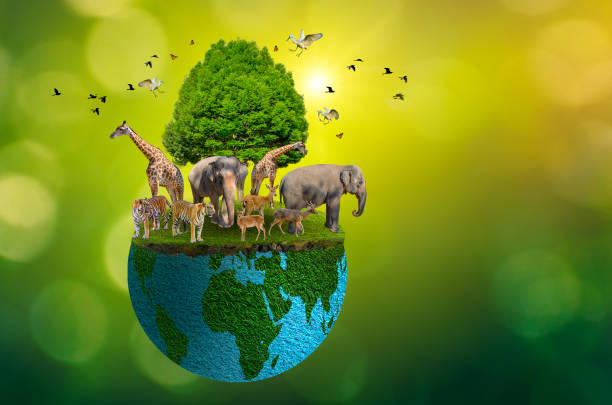In a bid to help in the protection of endangered animals, the British TV channel, WildEarth, launched its NFTs, critically, 40% of the primary sale proceeds go to the local custodians of the land on which animals live. In an exclusive interview, co-founder, CEO, WildEarth, Graham Wallington, highlighted the philosophy behind the approach:
“Nature can look after itself – it just needs a home. The real mission is to ensure local populations have an economic incentive to not poach.
Unlike blockchain cryptocurrencies, NFTs are non-interchangeable units of data that can be associated with digital files such as photos, videos, and audio, as well as physical items. Due to their uniquely identifiable nature, NFTs are becoming increasingly popular with wildlife conservationists. Essentially, digital versions of an endangered species are tagged to a token, which can be bought and sold in online marketplaces. Proceeds are then funneled back into preservation efforts.”
Recently, WildEarth, a 24/7 live British TV channel that is also purpose-driven for-profit nature technology, announced it had joined the growing list of firms that are minting conservation NFTs. The company’s token, ‘WildEarth NFT’, enables the show’s viewers to become meta-custodians of the animals that are being filmed.
Wallington said:
“This project has been a monumental exercise to get off the ground. It feels great that we can finally put these NFTs on the market.”
Originally, WildEarth said that it would release the ‘Genesis Collections’ that are made up of five hyenas, nine lions, and 11 leopards. 40% of every WildEarth NFT sold will be paid to the custodian of the wild habitat that every animal lives. Another 8% of each future sale will be changed into local currency and paid to the habitat guardian or custodian, forever.
Wallington noted:
“The royalties generated are paid to the land’s custodians as an incentive to conserve the wildlife habitat. That is what conservation should be about. Counterintuitively, the animals do not need our management – they just need a home. It is the local population that must be on board. The key is to build an alternative revenue source to the existing ones available to the custodians, such as hunting or tourist safaris.”
All long-lasting conservation projects make it economically viable to leave nature alone. If it pays, it will always stay. WildEarth has even considered the environmental effect of the blockchain its tokens are minted on. That is a major site of criticism for NFTs that allege to have a ‘green conscience’ – but not for WildEarth:
“One of the biggest challenges was ensuring we weren’t creating high energy NFTs, while at the same time getting the tokens on the biggest secondary market, OpenSea. Fulfilling both goals was tricky because Ethereum – which is where the vast bulk of the world’s NFT’s currently sit – is a very carbon-intensive environment. One NFT on that chain can consume the same amount of energy that an average US household does in six days.”
To get around these issues, WildEarth decided to use the “Polygon sidechain”. Hence, its tokens are available on OpenSea but the rate of energy consumption is 100,000 times less than that of the Ethereum blockchain. Wallington mentioned:
“Minting a WildEarth NFT on Polygon is the energy equivalent of watching our channel for just 10 minutes.”
By Q4, 2022, WildEarth targets to offer every NFT owner access, through a mobile app, to video, anecdotes, images, and information on the movement of their animals over time. Apart from that data, the app will enable NFT owners to socialize amongst themselves and create exclusive clubs with many other wildlife-conscious token fans.
Graham said:
“The value of people owning these NFTs goes beyond the financial. What we’re trying to create here is a feeling, an experience. By holding a unique NFT for an endangered animal, people get a real sense of custodianship for that individual – they can follow the animal’s life by watching our TV channel. They will even be able to check in with other NFT owners via our app-based club. This interactivity is key to the future of conservation.”
While speculating about the place NFTs will hold in the future, Wallington explained:
“Right now, when people think of NFTs they see bored apes and crypto punks, but we must focus on the applications of the technology itself. In terms of being able to authenticate real-world assets and make them tradable, NFTs are a phenomenal breakthrough. In a few years, they may be as ubiquitous as email addresses.”
WildEarth NFTs is yet another notable case study on how primed the technology is to alter supply chains, reshape how we handle different assets, and importantly, how we bake the natural world and integrate it with global financial systems.

 2 years ago
196
2 years ago
196 


